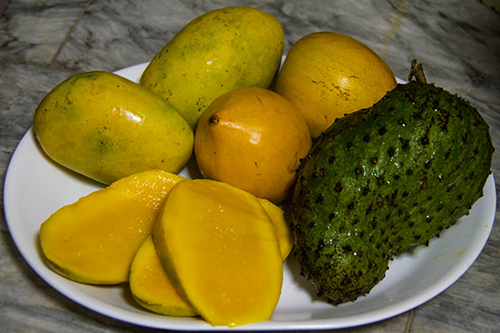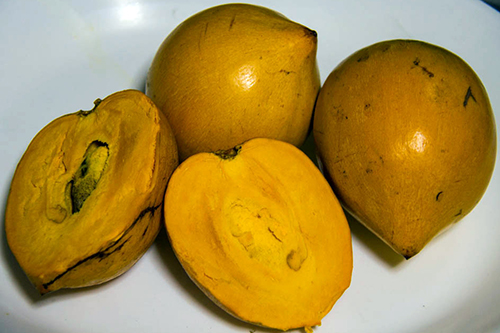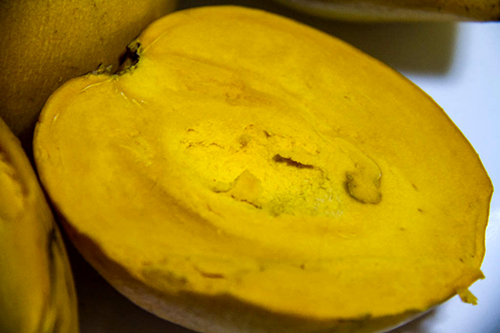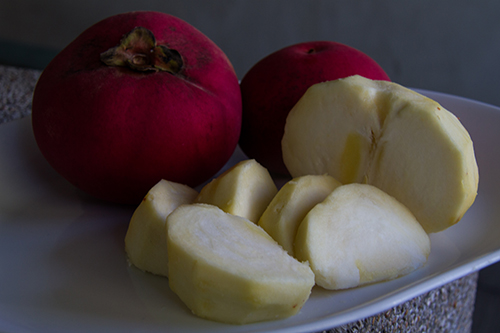I ate so many fruits while I was there. If I never eat another mango again, I know I’ll have eaten the sweetest, most buttery melt-in-your-mouth mangoes on the planet, in the Philippines.
Chesa, the two more orange fruits next to the guyabana (green prickly-skin fruit), is grown from an evergreen tree native to Mexico and South America but now cultivated across Asia. It’s in the same genus as Cambodia’s Lamut, which is smaller and browner. Sri Lankans call their varieties laulu/lavulu/lawalu. Another variety that may have a more familiar ring to English speakers is Sapodilla.
Guyabana is a fruit in the Annona genus in the pawpaw/sugar apple family, which I believe is native to the Andes but now cultivated in many countries that don’t get too cold (correct me if I’m wrong!). Similar fruits from the genus are called Tiep in Cambodia, Atis in the Philippines, Annona in Guatemala. I’ve heard other species called Soursop, Cherimoya, Custard Apple. Apparently many species in this genus have important agricultural, medicinal and pharmaceutical uses.
Photos are courtesy of Keith Kelly.



And here’s another pungent fruit from the tropics, mabolo. This one is native to the Philippines. It grows from a tree called kamagong, which is sought-after for its unique dark characteristics. I’m used to durian, jackfruit and other foul-smelling fruit and not averse to trying them despite the off-putting aroma, but this one is an exception. The outer skin is red and has the fuzzy texture of velvet – I’ve been told to wash it very well or your skin will itch where it came to contact with the skin of this fruit. I can’t find reference to that, though. When cut open it has the texture and feel of apple, but a bit more creamy. The ones we had was a bit bland, so I was not very impressed.

Leave a Reply